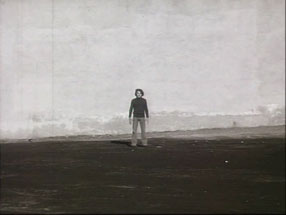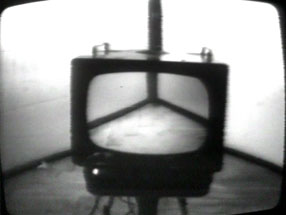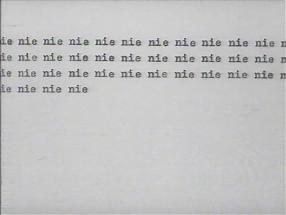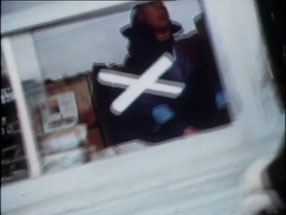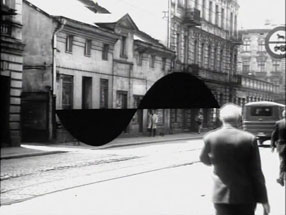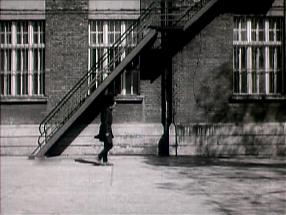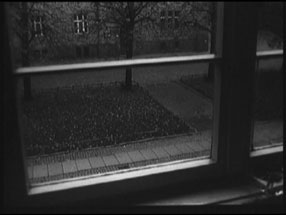As a professor at the Łódź Film School, Waśko has tried to work out an objective film science by employing the apparatus of logic and mathematics. His research involves a scientific quest for systemic generalisations about the structural character of analysed art language. In line with these propositions, in the film Configuration I – VI the artist moved his research (involving construction of film space through shots, their juxtaposition and camera movement) into the sphere of laboratory operations, building and then testing abstract models. In his essay Modele struktur filmowych [Models of Film Structures], he writes: “As we know, the construction of models is a method used to simplify problems, to increase the chances of solving them. There are two types of models: 1. the ‘theoretical model’ is a set of simplifying assumptions; 2. the ‘real model’ is the realisation of the theoretical model. In order to obtain the real model, one needs to construct such physical configuration that simplifies the tested reality, and yet is similar enough to aid the solution of problems related to that reality.” As a real model, the film Configuration I – VI is a realisation of a theoretical model (diagrams of scores created by the artist). Waśko examines the most basic typologies of camera movements and their juxtapositions. Thus, the artist creates his laboratory research space, in which he can test the individual movements of the camera, their configurations and how they create space in film.
Quoted from: Ł. Ronduda, Polish Art of the 70s. Avant-garde, Warsaw 2009; Ryszard Waśko, „Modele struktur filmowych”, [w:] R. Kluszczyński, Warsztat Formy Filmowej, exhibition catalogue, CCA, Warsaw 2000.
Year: 1973
Duration: 2'52"
Language: no language
Source: 35 mm
© Ryszard Waśko
Acquisition: deposit
Ownership form: deposit
